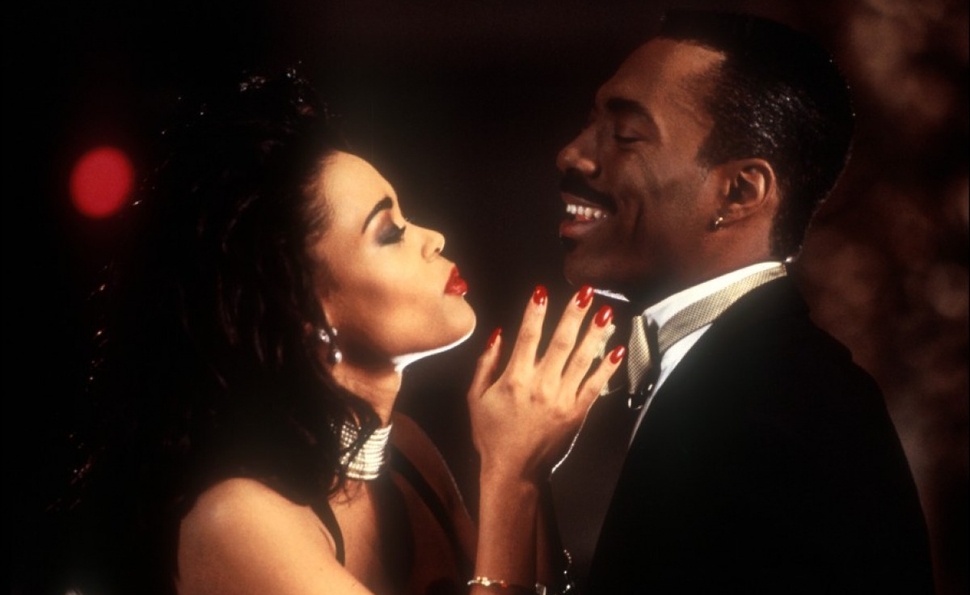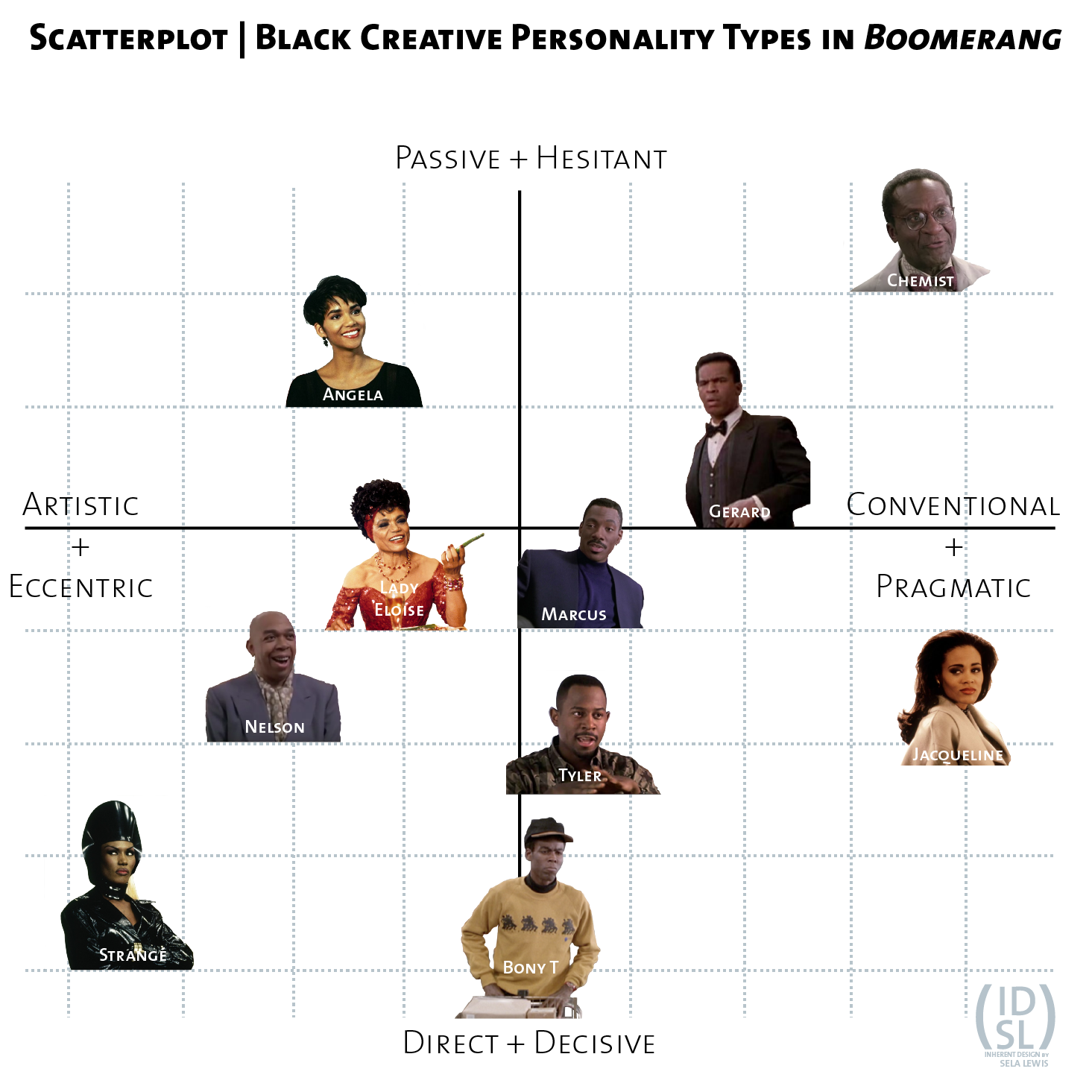
Jan
Diversity Without Pity #33 | Boomerang (1992)
[responsivevoice_button voice=”UK English Female” buttontext=”Listen to Post”]
Every couple of years, I rewatch Boomerang, Eddie Murphy’s 1992 sexy romantic comedy about a womanizing ad executive who eventually gets a taste of his own medicine after meeting Jacqueline, his new boss and love interest (played by Robin Givens).
More than 20 years later, I’m drawn to this film for several reasons. The hair, makeup, and costume design for each character still hold up and briefly acted as inspiration for how I imagined my own adulthood as a working professional. But what resonates most is the depiction of a modern marketing team full of different kinds of Black creative professionals.
Featuring an all-Black cast in DWP is a reach, but there is always diversity within similarities. Let’s unpack the specific personality types that make up the creative team in Boomerang. I’ve illustrated a scatterplot featuring all the main and supporting characters who are responsible for marketing, art direction, product development, TV production, and accounting.
Despite what some initial and recent reviews would have you believe, the workplace environment of Boomerang is not entirely made-up or fantastical. Marketing and advertising agencies like Burrell-McBain were vanguards of modern advertising targeted to African American consumers. And because of this, being Black and working in advertising is not a frivolous, yuppy profession.
But within that world Boomerang creates a kind of place where Bony T can be the office gossip, Angela can be the artistic eye, Nelson can be nasty, Strangé can throw her panties in the chemist’s face, and Marcus can be someone that understands and pulls all these people together.
Assimilation & Tokenism in Corporate America
Deloitte recently eliminated their diversity program. This is a big deal because Deloitte is considered one of the “big four” in the world of multinational accounting and professional services. Instead of diversity programs encouraging true diversity by way of perspective, employees enrolled in employee resource groups (ERGs) were instead expected to assimilate to predominant cultural norms. When only a few can assimilate, companies end up with “tokens”: one person or a small percentage of people from underrepresented groups. The downsides of tokenism are that rather than encouraging companies to hire, retain, and promote several types of talented people from a similar background, one person is expected to be the representative of their entire group. Placing unrealistic expectations and pressures on that one individual. I would find it very hard to see any 3 or 4 of the characters in Boomerang trying to make it successfully on a marketing team, let alone one. But that’s what happens in the real world. And an often-seen but unspoken side effect is that companies end up with counterproductive office politics of intraracial policing of tone and behavior.
Take a look at this scene, in which Marcus (played by Murphy) gives Nelson (played by the late Geoffrey Holder) full creative reign to produce a commercial for a new perfume from Strangé (played by the #MasterSauce herself Grace Jones).
The commercial wasn’t released but was considered an expensive and ridiculous nightmare. Someone could’ve inevitably lost his/her job. The following scene showed something else. Instead of Marcus pointing the finger at Nelson, he takes full responsibility. Instead of Jacqueline giving the board go-ahead to fire Marcus (who happened to be her former lover), she convinces them otherwise. It isn’t much of a reach to think that what creates an environment like this is less likely that everyone is Black. But that each creative person is so different, they need one other to thrive.
”Boomerang creates a kind of place where Bony T can be the office gossip, Angela can be the artistic eye, Nelson can be nasty, Strangé can throw her panties in the chemist’s face, and Marcus can be someone that understands and pulls all these people together.
I’ve not convinced the problems of assimilation can simply be solved by, in this case, all-Black ad agencies. Expecting so can still result in other types of — or a combination of — discrimination such as sexism, homophobia, transphobia, colorism, classism, ableism, nationalism, and ageism. I am convinced we have to lengthen pathways for different personalities to thrive in creative corporate environments; making space for many to work well together, even in high-pressure creative situations.
Diversity Without Pity is a blog series from IDSL, highlighting media that uses smart design, and considers the diversity of it’s casting without selling the viewer or consumer short.



